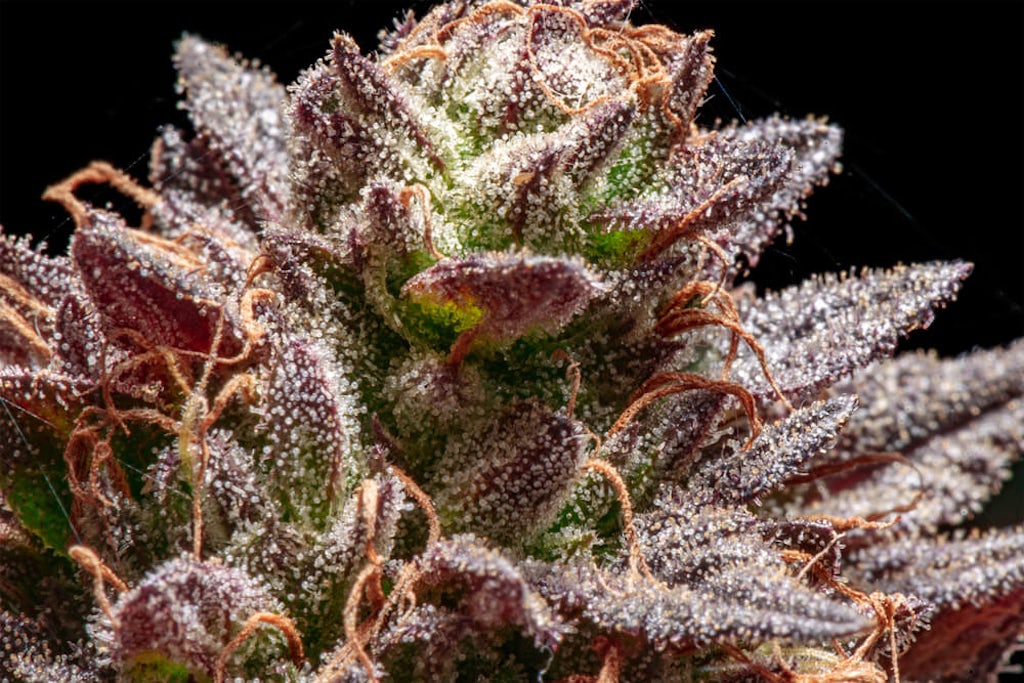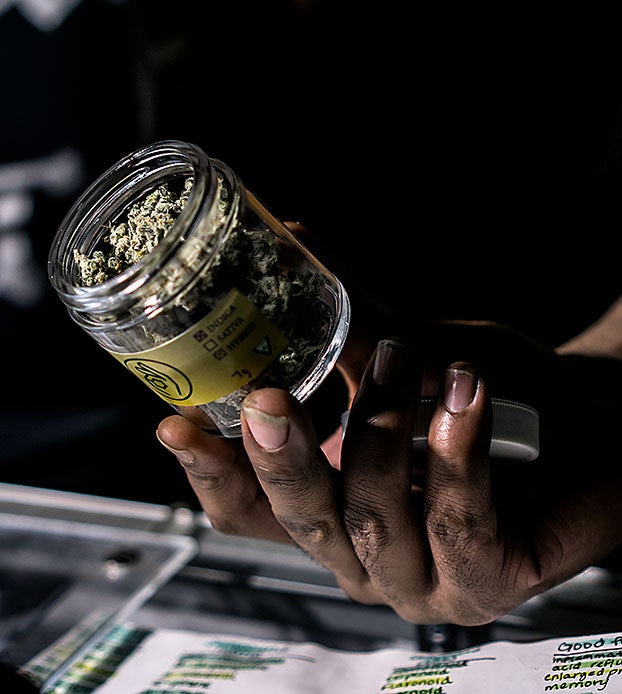This article was first published on Analytical Cannabis. It appears here with permission.
Cannabis testing has come a long way in the past century. What began as local policemen using microscopes to try and spot cannabis’ distinctive “claw-like” hairs is now a global industry worth over $1.1 billion USD.
As the tide began to turn with more regions opening regulated markets for the sale of medical and recreational cannabis, it became even more important to ensure that products were being properly tested and proven to be safe for consumption. Over the past decade, analysts have developed a whole raft of different analytical testing techniques – many adapted from techniques common in the food and drink industries – to find new and improved ways of protecting consumer health from dangerous contaminants.
This article examines five of the most common cannabis tests that are performed in laboratories, and the best analytical techniques for each that maximize efficiency and accuracy.
Cannabis potency testing
While the exact tests required by each legal cannabis jurisdiction can vary greatly, the bread and butter of the cannabis testing sector is the potency test to determine how much CBD and THC is in a given product.
For a quick and simple analysis method, many labs favor methods using gas chromatography coupled with a flame ionization detector (GC-FID). Liquid samples are vaporized and then passed through a gas chromatograph, where the individual compounds present in the sample begin to separate out into discreet parts based on their chemical affinity with the column. The separated compounds are then fed into a flame that ionizes the compounds before they pass through a detector. By measuring the current produced as the ions pass the detector’s electrode, it is possible to accurately quantify all the organic chemical species present.
While GC-FID is a fast solution for potency analysis, full cannabinoid profiling requires a more direct technique. For this purpose, liquid chromatography is preferred, as it allows analysts to directly measure the amount of cannabidiolic acids in a sample, not just how much is converted CBDA or THCA is converted to CBD and THC in the specific heating conditions of a gas chromatograph.

High-performance liquid chromatography coupled with a diode array detector (HPLC-DAD) and liquid chromatography time-of-flight mass spectrometry (LC-TOF-MS) are the two most commonly preferred systems for this, with the former being the most frequently used and the latter being a more high-resolution solution for scientific research laboratories.
“With advances in instrumentation and separation technology, HPLC-DAD has gained popularity for cannabinoid analysis for a variety of reasons, including short run times and low limits of quantification for each analyte,” Dr Holly Johnson, chief science officer at the American Herbal Products Association, told Analytical Cannabis.
In HPLC-DAD, the analytes are separated using a liquid chromatography column and analyzed according to the ultraviolet and visible (UV-vis) absorption spectra obtained by the diode array detector. LC-TOF-MS uses high-resolution accurate mass (HRAM) spectrometry to account for matrix effects and other chemical interferences, but the complexity of this technique means it is predominantly used in the research sector rather than in the wider testing industry.
Cannabis pesticide testing
The exact target lists of which pesticides must be screened for vary largely between states and between countries. And with no unified set of testing standards or standard analytes, it is unsurprising that the techniques used by testing laboratories also vary significantly from lab to lab.
“Because of the way that the industry has developed without a lot of available unified methods, many groups have developed their own best extraction techniques and methods for doing analysis,” Ben Armstrong, lab director at Juniper Analytics LLC, told Analytical Cannabis. “People have made really concerted efforts to develop really strong methods.”
As a general rule, the testing workflow includes some type of extraction step, designed to capture any pesticides present on the material, and a cleanup step to remove any pigments or interferences that may affect the testing results. The resulting sample is then analyzed using either liquid or gas chromatography with tandem mass spectrometry (LC/MS/MS or GC/MS/MS).

“For the extraction, people are mostly using either acetonitrile or an acetonitrile QuEChERS-based method that was developed by the food industry,” Armstrong explained.
“[T]he analysis step has traditionally been performed on an LC/MS/MS [liquid chromatograph with tandem triple quadrupole mass spectrometer]. There are a handful of compounds that are more amenable to a GC-MS [gas chromatography-mass spectrometry] analysis, and so there are quite a few groups that are utilizing a GC-MS to analyze those compounds as well,” he added.
Though some compounds are more amenable to GC analysis than LC analysis, it is also important to remember that gas chromatography‘s heating step – just as it affects the cannabidiolic acids in potency analysis – can also affect some of the more thermally labile pesticides. To analyze all of the pesticides on some of the more detailed target lists, such as the Canadian mandatory testing list of nearly 100 different pesticides, laboratories tend to use a combination of liquid and gas chromatography systems to make sure that their workflow is sensitive to every compound required.
Heavy metals testing
Cannabis plants have a tendency to “pull” heavy metals out of their surrounding soil and absorb them into the plant as they grow. It is a fantastic trait if you are working with hemp to clean up an area of contaminated land, but not so great for those growing cannabis for human consumption.
Testing cannabis for heavy metal contamination is normally done using one of three atomic spectrometry-based methods: atomic absorption (AA), inductively coupled plasma optical emission spectroscopy (ICP-OES), or inductively coupled plasma mass spectrometry (ICP-MS).
AA is a rather simple technique, which uses the principle of the Beer-Lambert Law to measure the concentration of certain analytes present by analyzing the wavelengths of light absorbed by gaseous free atoms of the sample. The low-cost of this analysis has made it the most common analysis method of this type, however, its slow sample throughput can be a hindrance.
Labs with a larger budget instead tend to opt for ICP-MS analysis, which ionizes the elements in a sample using inductively coupled plasma. The ions can then be fed into the mass spectrometer and analyzed according to their respective mass-to-charge ratios. While it is a more expensive technique, the fast runtimes, high throughput, and superior sensitivity of ICP-MS are a strong pull for larger laboratory operations.
ICP-OES is almost a middle ground between the two other atomic spectrometry techniques, cheaper than ICP-MS, and more efficient than AA. It works by using ICP to excite the elements present in the sample so that they begin to emit photons of a characteristic wavelength. By measuring the brightness and wavelength of this light that is emitted, it is possible to identify and quantify any heavy metals present. While it cannot reach the same parts per trillion levels of sensitivity that ICP-MS can, given the right sample preparation technique it can still detect effectively into the low parts per billion range.
Microbial testing
With medical cannabis making up a huge part of the global cannabis sector, it especially crucial that cannabis material is free from any harmful microbes that could detrimentally affect immunocompromised medical cannabis patients.
Generally, labs carrying out microbial analysis tend to use traditional culture methods (TCM), or quantitative polymerase-chain-reaction (qPCR) analysis.
In many ways, TCM is considered the go-to analysis method as it is a relatively straightforward technique – it is even possible to buy sample-ready culture medium systems that are specially designed for different microbial tests. By comparison, qPCR is a far more high-tech approach, which uses polymerase chain reactions to amplify DNA or RNA characteristic to the target microbes in order to detect their presence.
“Traditional culture plating methods can take up to seven days, in contrast, a PCR method takes around two days, including the incubation period,” Amanda Horodyski, associate laboratory director at Atlantic Test Labs Inc., told Analytical Cannabis.
“Culture-based techniques often result in false positives because plating is easier to contaminate and requires a trained microbiologist on staff in order to distinguish between yeast and bacteria species.”
Perhaps most crucially, certain types of microbe just do not culture well under testing conditions. Aspergillus molds – the spores of which can cause aggressive pulmonary disease if inhaled – are known to be unamenable to most of the common TCM media. Such molds are more easily detected using qPCR methods.
“I recommend a real-time quantitative PCR procedure. This method is superior because it is extremely sensitive,” she said. “Traditional culture plating methods will become outdated, as it is not viable for high-volume laboratories.”
Mycotoxin testing
Molds and fungi can be dangerous contaminants themselves. But when left to proliferate, many can also go on to release additional harmful mycotoxins. Aflatoxins, a type of mycotoxin produced by Aspergillus species, are a particular risk as they can be potent carcinogens.
Qualitative testing strips are the simplest type of mycotoxin screening technique used in the cannabis industry, and work by exploiting a natural reaction between antibodies and mycotoxins. When the strip comes into contact with a specific mycotoxin, it will change color to indicate its presence. There are also quantitative strips available that use the same natural antibody reaction, but which give a digital read-out indicating how much mycotoxin was detected. More advanced quantitative strip methods are able to read down to the low parts per billion levels.
However, formal cannabis labs tend to consider these strips as just a good preliminary test. Most commonly labs will use immunoaffinity column chromatography to separate out the sample into its constituent compounds, which can then be analyzed using a bench-top fluorometer that is amenable to measuring mycotoxins.
Immunoaffinity columns and fluorometry can detect the presence of mycotoxins levels of 0.5 parts per billion. But for even greater accuracy, some larger testing operations elect to use ultra-performance liquid chromatography-tandem mass spectrometry (UPLC/MS/MS) analysis. This can reach down to the part per trillion levels. But crucially, using UPLC/MS/MS means that mycotoxin analysis can be run at the same time as other cannabis tests that use mass spectrometry – such as pesticide testing – saving labs time, and money.
Sign up for bi-weekly updates, packed full of cannabis education, recipes, and tips. Your inbox will love it.

 Shop
Shop Support
Support
















